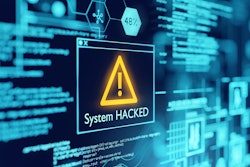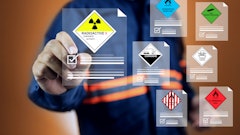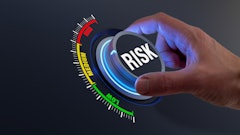
The manufacturing industry faced a major setback after losing roughly 1.4 million jobs at the onset of the pandemic, and it’s struggled since then to hire entry-level and skilled workers to refill the positions and resolve the resulting supply chain disruptions. Although Deloitte says 84% of manufacturing jobs lost during 2020 have been added back to payrolls, turnover is still high.
During this challenging time, when companies not only face a skills gap but also unabating disruptions (new COVID strains, supply chain delays and more), technology is playing a greater role in ensuring that product quality doesn’t suffer. For companies that are still feeling the staffing strain, video-based quality systems are emerging as a key technology advancement for enhancing performance and quality of output. The key is ensuring security and enhanced operations.
How does visual inspection technology work in an industrial setting?
Video inspection enables companies to capture real-time imagery on devices, such as cameras, on manufacturing plant floors, which feed into inference models for the generation of insights that, when connected to a manufacturing execution system (MES), allows the supervisory controller to determine next actions.
- Human-led plant floor inspections to detect production defects may happen multiple times a day, however, a device such as a camera can be always on, so that defects can be spotted immediately and a solution proposed and worked on.
From a cost perspective, the savings from preventing downtime are enormous.
- Auto industry manufacturing executives cited the average cost of one minute of stopped production to be $22,000 (and some cited the figure to be as high as $50,000 per minute).
- At 82%, the number of companies that have suffered at least one unplanned downtime incident during the past three years is really high.
Lynx calculations have found that defects can be reduced by up to 10x, defective parts can be prevented from being shipped out and insights can be gleaned into the cause of any defects to optimize processes.
Visual inspection, therefore, represents a critical component in a manufacturing company’s digital transformation strategy, particularly with a view to building the structural resilience necessary to ensure a good-looking bottom line.
What are some of the challenges with this technology?
As the factory floor becomes more connected, companies need to be aware of the security risks and how to mitigate them, so they can reap the benefits of new technology advancements that help combat workforce shortage challenges without worry.
In the case of visual inspection technology, companies need assurance they can implement immutable isolation and non-bypassable security to give plant or facility managers confidence that the solution meets the operational technology (OT) security requirements.
Lynx approaches this by ensuring a validated and secure video inspection solution through virtual “air gapping,” which is essentially providing isolation between the different parts of the manufacturing technology system. Until recently, the merging of OT and IT worlds - training AI and machine learning models in the cloud and deploying cloud-based workloads at the edge - posed security challenges in mission-critical industrial environments. Given the industry’s growing reliance on connected products, this left it especially vulnerable to cyber risks.
- By isolating the three functions of visual inspection described above (image capture (the camera device), insight via inference engine and the action with a supervisory controller), yet providing the option of secure one-way connections between them, companies can deploy the technology securely.
There’s no doubt that connected products can help mitigate the impact of the labor shortage during a challenging time for manufacturers. It’s also the case that technologies such as visual inspection bring benefits that reach far beyond the skills gap companies face today. As part of a longer-term strategy to build a structure that increases business resilience, new technology on the factory floor makes sense, but companies can’t afford to address one business risk (staffing) at the cost of another (cyber threats). Any connected technology introduced onto the plant floor requires security validation to avoid falling victim to a breach. Look for partners that have a deep history in security within mission critical environments to help guide you on a clear path for security validation of video inspection.


















